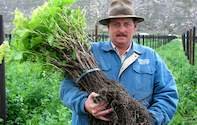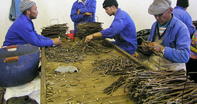Deciding which grape cultivar to plant is influenced by a variety of aspects; the most important is the soil type and area (e.g. slope, height above sea level) as well as the type of wine to be delivered for a specific market.

During the planning of the new vineyard, the total size of the farming should be considered. For example, it will have practical implications for harvesting two different crops at the same time. When selecting cultivars, the harvesting times of the different crops should be carefully considered in order to plan the harvest period.
When selecting a specific cultivar, it should be remembered that the cultivar may also have one or more clones. Some clones ripen earlier or may have bigger bunches and can therefore yield more grapes. The choice of rootstock is also important.
Choose rootstocks that are suitable for the specific soil type. Rootstocks are generally over time well evaluated in South Africa in various field trials and in commercial plantings.

This has lead to the use of rootstocks with acceptable resistance to phylloxera and nematodes, such as 99 Richter, 110 Richter, 101-14 Mgt, 140 Ruggeri and 1103 Paulsen, as well as Ramsey for very sandy soils and mass production. But where the soil is contaminated with Phytophthora cinnamomi the highly sensitive 99 Richter must be avoided.
Experience about the rootstocks in the specific soil type should be considered as the rootstock also influences the vigour of the vineyard. Where large volumes of grapes are to be produced, it makes sense to use Ramsey and US 8/7 rootstocks. For cultivars where a lower yield and high quality are required, 99 Richter, 110 Richter and 101-14 Mgt can be considered.
Only healthy certified plant material should be purchased and must be ordered at a reputable and registered vine nursery at least 14 to 18 months before planting.
By Marinda Louw